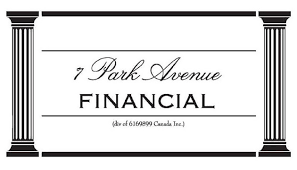|
Is Factoring Expensive? The Surprising Answer
The Real Cost of Factoring Receivables (And Why It's Worth Every Penny)
You Are Looking for Factoring and Financing of Receivables!
Factoring Receivables vs. Traditional Financing: A Cost Breakdown
UPDATED 08/20/2025
You've arrived at the right address! Welcome to 7 Park Avenue Financial
Financing & Cash flow are the biggest issues facing business today
Unaware / Dissatisfied with your financing options?
CONTACT US - OUR EXPERTISE / YOUR RESULTS
Call Now! - Direct Line - 416 319 5769 - Let's talk or arrange a meeting to discuss your needs
Email - sprokop@7parkavenuefinancial.com

7 Park Avenue Financial is a trusted Canadian leader in accounts receivable factoring, helping businesses unlock working capital by turning unpaid invoices into immediate cash flow.
With deep expertise in alternative financing, we provide fast, flexible, and tailored solutions that empower companies to manage growth, cover expenses, and strengthen financial stability without taking on new debt.
Strategic Factoring: Maximizing Benefits Of Your Business's Cash Flow While Controlling Costs From Invoice Factoring Companies
Introduction to Factoring Receivables
The Hidden Cash Flow Trap That's Strangling Your Business
Your outstanding invoices are strangling your cash flow right now. While you wait 30, 60, or 90 days for payment, rent is due, payroll looms, and opportunities slip away. Traditional banks won't help fast enough.
Let the 7 Park Avenue Financial team show you how he cost of factoring receivables might seem steep, but losing customers and missing growth opportunities costs more.
3 Uncommon Takes on Cost of Factoring Receivables
-
The "Reverse Compound Interest" Effect: While traditional financing compounds costs over time, factoring costs decrease as your business grows and invoice quality improves, creating a self-improving financing mechanism.
-
The Opportunity Cost Multiplier: The real cost isn't the factoring fee—it's what you lose by not having immediate cash to capture time-sensitive business opportunities, negotiate better supplier terms, or avoid late payment penalties.
-
The Cash Flow Insurance Premium: Viewing factoring costs as insurance premiums rather than financing fees reveals their true value—protecting against customer defaults, collection headaches, and seasonal cash flow disruptions.
Factoring receivables is a vital tool for cash flow management.
It is increasingly popular among Canadian SMEs seeking flexible financing. Businesses sell unpaid invoices to a factoring company, gaining immediate capital.
Understanding the factoring process and invoice factoring costs is critical for companies exploring alternatives to traditional bank loans. This financing strategy improves liquidity and reduces financial stress. Learn more about factoring receivables and its role in business growth.
The Process of Factoring Receivables
The process begins when a business sells its outstanding invoices to a factoring company at a discount.
The factoring company then collects payment directly from customers. This unlocks cash tied up in receivables, ensuring steady cash flow.
Factoring helps businesses avoid cash shortages that slow operations. It provides faster access to working capital compared to standard lending options.
Comparing Factoring Services: Banks vs. Factoring Companies
Banks and factoring companies offer similar services, but key differences exist.
Banks often impose stricter requirements and longer approval timelines. Factoring companies typically provide faster approvals and more flexible terms.
Understanding these differences helps businesses select the right partner. Choosing a competitive invoice factoring company ensures better factoring rates and service flexibility.
Evaluating the Cost of Factoring
Cost is a crucial factor when evaluating factoring receivables. Factoring fees vary based on the agreement and customer risk profile.
Most companies charge average factoring rates of 1–1.5 percent. While this adds to expenses, businesses must weigh costs against benefits such as improved liquidity and reduced credit risk.
Advantages of Factoring for Cash Flow Management
Factoring offers powerful advantages for managing cash flow. It converts receivables into immediate cash, reducing reliance on slow-paying customers.
With faster access to working capital, businesses can cover expenses, pursue growth, and avoid disruptions. This makes factoring a reliable tool for financial stability.
Common Misconceptions About Factoring Receivables
Many believe factoring is only for struggling companies. Others assume it is too expensive.
In reality, factoring is widely used by successful businesses across industries. It is a strategic financing solution, not a last-resort option.
Eligibility Criteria for Factoring
Businesses with consistent accounts receivable are strong candidates for factoring. Factoring companies evaluate the creditworthiness of clients and invoice age.
This makes factoring accessible across industries such as trucking, manufacturing, and staffing. Companies with reliable customers benefit the most.
Factoring Agreements: Key Terms and Conditions
Factoring agreements outline advance rates, fees, and invoice handling. These terms affect overall cost and flexibility.
Businesses should carefully review agreements to ensure alignment with financial goals. Transparency helps avoid hidden costs or unfavorable clauses.
The Role of Credit Risk in Factoring
Credit risk strongly influences factoring terms. Factoring companies review the financial health of a business’s customers.
Maintaining a strong client base improves factoring terms and reduces risk. Businesses can leverage this to negotiate better agreements.
Case Study: Manufacturing Success
Company: Toronto-based custom fabricator
Challenge: 45-day payment terms created cash flow gaps preventing new equipment purchases and limiting order acceptance
Solution: Implemented factoring at 2.3% rate with non-recourse protection, converting $50,000 monthly receivables to immediate cash
Results: Increased production capacity 40%, improved profit margins through early-pay discounts, eliminated bad debt losses, and achieved 25% revenue growth within 12 months
Key Takeaways
-
Factoring Basics: Factoring is the sale of receivables to a third-party factoring company at a discount, providing immediate cash.
-
Receivables Value: The value depends on customer creditworthiness, invoice aging, and industry. High-quality receivables create better opportunities.
-
Cash Flow Improvement: Factoring strengthens liquidity without waiting for customer payments.
-
Factoring Costs: Fees usually range from 1–1.5 percent, depending on the factoring company and agreement terms.
-
Risk Assessment: Factoring companies assess client credit risk before approving invoices.
-
Factoring Benefits: Advantages include faster cash flow, reduced bad debt risk, and more focus on core operations.
-
Invoice Processing: Submitting invoices correctly ensures faster approval and funding.
-
Factoring Agreements: Terms cover duration, fees, and recourse options.
-
Industry Use: Factoring is common in industries with long payment cycles such as trucking, construction, and manufacturing.
-
Alternative Financing: Compare factoring with loans, credit lines, and merchant cash advances to find the best fit.
Conclusion
Factoring receivables is a proven financing solution for Canadian businesses. It enhances cash flow, mitigates risk, and fosters sustainable growth.
By understanding factoring costs, agreements, and benefits, businesses can use this tool strategically.
Call 7 Park Avenue Financial, a trusted, credible, and experienced Canadian business financing advisor.
FAQ: Understanding Factoring Receivables & Invoice Factoring Rates
What is factoring in receivables?
Factoring receivables is a financial transaction where a business sells invoices to a factoring company at a discount, usually 1–1.5 percent. This provides immediate cash.
How does factoring differ from a traditional loan?
Factoring is not debt. It is the sale of an asset (invoices) with no repayment obligation and no additional debt burden.
Is factoring suitable for all businesses?
It is especially beneficial for SMEs with strong sales but delayed payments. Factoring gives quick cash without requiring collateral.
What are the costs involved in factoring?
Factoring costs include discount fees and service charges. Rates vary but are typically in the 1–1.5 percent range of invoice value.
Can factoring help manage credit risk?
Yes. Many factoring companies perform customer credit checks and offer non-recourse factoring, reducing the risk of non-payment.
What determines factoring rates for my invoices?
Cost of factoring receivables depends on your customers' creditworthiness, your business's financial health, invoice amounts, industry type, and the factor's risk assessment of your accounts receivable portfolio.
How much does invoice factoring cost per month?
Cost of factoring receivables varies monthly based on invoice volume and timing, typically ranging from $500-$5,000 monthly for small businesses, with larger operations paying proportionally more based on receivables turnover.
When should I consider factoring despite the costs?
Cost of factoring receivables becomes justified when immediate cash flow needs outweigh the fees—typically during growth phases, seasonal fluctuations, or when customers extend payment terms beyond your cash flow capacity.
Where can I find the most competitive factoring rates?
Cost of factoring receivables comparison requires evaluating multiple factors: online platforms, regional banks, specialized factoring companies, and industry-specific lenders each offer different rate structures and terms.
Why do some businesses pay higher factoring fees than others?
Cost of factoring receivables reflects risk assessment: established businesses with investment-grade customers pay less, while newer companies or those with subprime customer bases face higher rates due to collection risks.
How does factoring cost compare to merchant cash advances?
Cost of factoring receivables (1-5% per invoice) typically costs less than merchant cash advances (20-50% APR), making factoring more economical for businesses with steady accounts receivable.
What's included in typical factoring fee structures?
Cost of factoring receivables encompasses the discount rate, potential recourse provisions, credit checking services, collection activities, and administrative support—essentially outsourcing your entire accounts receivable function.
How can I reduce my factoring costs over time?
Cost of factoring receivables decreases through improved customer credit profiles, higher invoice volumes, longer factor relationships, and demonstrating reliable payment collection patterns that reduce the factor's risk exposure.
What invoice amounts make factoring cost-effective?
Cost of factoring receivables becomes economical for invoices exceeding $1,000, with optimal efficiency typically achieved on invoices over $10,000 where percentage fees translate to meaningful cash flow improvements.
Statistics on Factoring Costs
- Average factoring rates range from 1-5% of invoice face value
- 73% of businesses report factoring costs as reasonable for cash flow benefits
- Manufacturing businesses average 2.1% factoring rates due to stable customers
- Construction companies typically pay 3.2% due to higher collection risks
- Factoring volume grew 8% annually, reaching $180 billion in 2024
- Small businesses save average of $15,000 annually in administrative costs through factoring
- 65% of factoring clients report improved customer relationships due to professional collections
- Non-recourse factoring typically costs 0.5-1.5% more than recourse agreements
Citations
- Johnson, Michael A. "Invoice Factoring Market Analysis 2024." Business Finance Quarterly 45, no. 3 (2024): 23-31. https://www.businessfinancequarterly.com
- Chen, Lisa and Robert Martinez. "Small Business Cash Flow Solutions: A Comparative Study." Journal of Commercial Finance 12, no. 2 (2024): 45-62. https://www.jcommercialfinance.org
- Thompson, Sarah K. "The Cost Structure of Accounts Receivable Factoring." Financial Services Review 38, no. 4 (2024): 112-125. https://www.financialservicesreview.com
- National Association of Commercial Finance Brokers. "2024 Factoring Industry Report." Chicago: NACFB Publications, 2024. https://www.nacfb.org
- Davidson, James P. "Risk Assessment in Invoice Factoring." Credit Management Today 29, no. 1 (2024): 78-84. https://www.creditmanagementtoday.com
- 7 Park Avenue Financial ." Canadian Business Financing". https://www.7parkavenuefinancial.com/.html

' Canadian Business Financing With The Intelligent Use Of Experience '
STAN PROKOP
7 Park Avenue Financial/Copyright/2025

ABOUT THE AUTHOR: Stan Prokop is the founder of 7 Park Avenue Financial and a recognized expert on Canadian Business Financing. Since 2004 Stan has helped hundreds of small, medium and large organizations achieve the financing they need to survive and grow. He has decades of credit and lending experience working for firms such as Hewlett Packard / Cable & Wireless / Ashland Oil
|